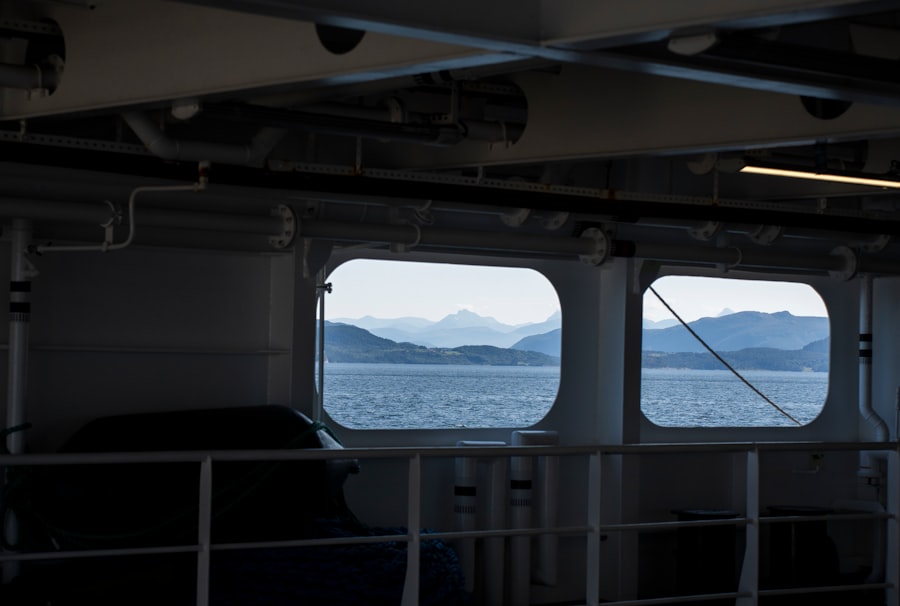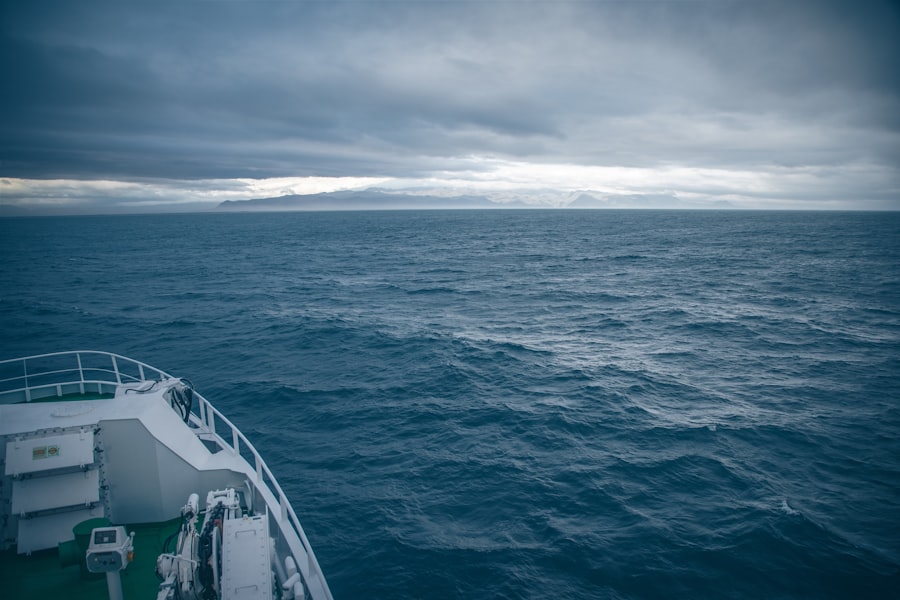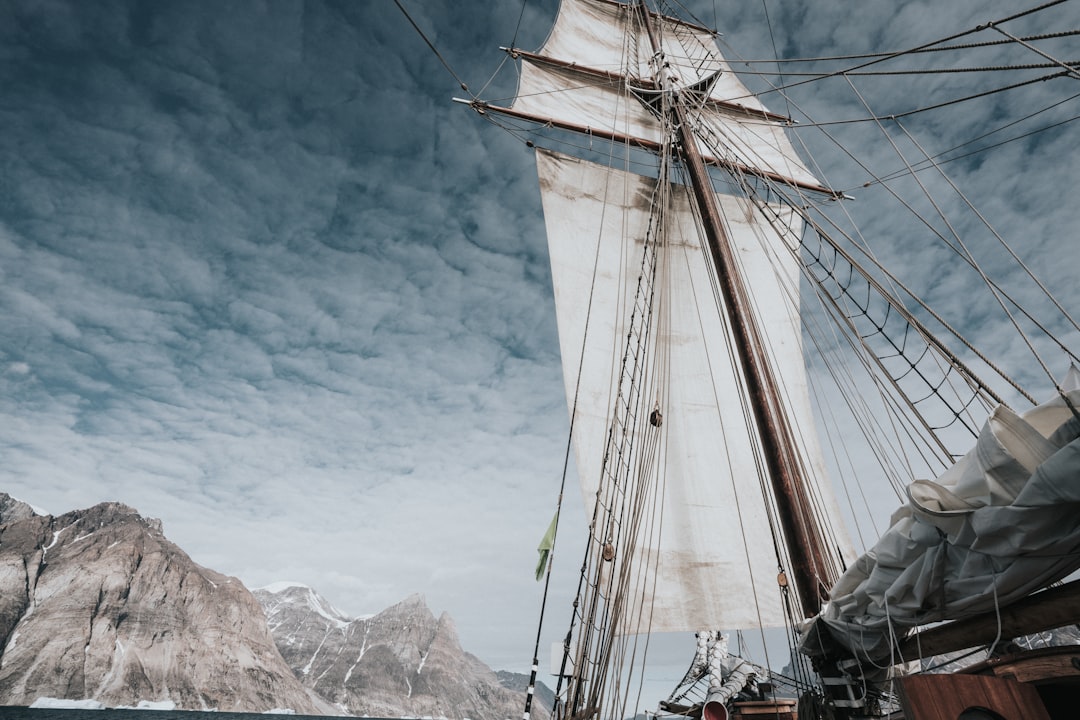The Drake Passage, a body of water situated between the southern tip of South America and Antarctica, is renowned for its tumultuous seas and unpredictable weather. Named after the English explorer Sir Francis Drake, who navigated these waters in the late 16th century, the passage serves as a critical maritime route for vessels traveling to and from the Antarctic region. Stretching approximately 600 kilometers (370 miles) wide, it is often regarded as one of the most challenging stretches of ocean in the world.
The Drake Passage is not only a geographical marvel but also a significant ecological zone, teeming with diverse marine life and serving as a vital conduit for ocean currents. Sailing through the Drake Passage is an adventure that attracts sailors, researchers, and thrill-seekers alike. The allure of traversing this notorious stretch of water lies in its raw beauty and the sense of accomplishment that comes with overcoming its challenges.
However, it is essential to understand that this journey is not for the faint-hearted. The passage is infamous for its rough seas, strong winds, and rapidly changing weather conditions, which can turn a serene voyage into a harrowing experience in a matter of moments. For those who dare to embark on this journey, the Drake Passage offers not only a test of skill and resilience but also an opportunity to witness some of the most breathtaking landscapes and wildlife on the planet.
Key Takeaways
- The Drake Passage is a treacherous stretch of water between South America’s Cape Horn and the South Shetland Islands of Antarctica.
- Sailing through the Drake Passage presents challenges such as extreme weather, strong winds, and rough seas.
- Proper planning and preparation are essential for a successful journey through the Drake Passage.
- Choosing the right vessel with experienced crew and sturdy construction is crucial for navigating the Drake Passage safely.
- Navigational techniques, safety measures, and emergency protocols are vital for a smooth sailing experience through the Drake Passage.
Understanding the Challenges of Sailing through the Drake Passage
The challenges of sailing through the Drake Passage are multifaceted and can vary significantly depending on the time of year and prevailing weather conditions. One of the most daunting aspects is the notorious waves that can reach heights of up to 15 meters (49 feet). These towering swells are generated by the confluence of strong westerly winds and the unique geography of the passage, which funnels ocean currents into a relatively narrow space.
As a result, sailors must be prepared for a rollercoaster ride that can test their mettle and their vessel’s seaworthiness. In addition to the formidable waves, sailors must contend with rapidly changing weather patterns. The Drake Passage is known for its unpredictable climate, where sunny skies can quickly give way to fierce storms.
This volatility requires sailors to remain vigilant and adaptable, constantly monitoring weather forecasts and adjusting their plans accordingly. The combination of high winds, rough seas, and sudden weather shifts makes sailing through the Drake Passage a true test of seamanship and preparedness.
Planning and Preparing for the Journey

Planning a journey through the Drake Passage involves meticulous preparation and attention to detail. Sailors must first assess their own skills and experience levels, as well as those of their crew. It is crucial to have a solid understanding of navigation techniques, weather patterns, and emergency protocols before setting sail.
Additionally, prospective sailors should familiarize themselves with the specific challenges posed by the passage, including potential hazards such as icebergs and strong currents. Equally important is the logistical aspect of planning. This includes selecting an appropriate departure window based on seasonal weather patterns, securing necessary permits for travel in Antarctic waters, and ensuring that all safety equipment is in good working order.
Sailors should also consider their provisions, ensuring they have enough food, water, and fuel for the journey while accounting for potential delays due to adverse weather conditions. A well-thought-out plan can make all the difference in ensuring a safe and successful passage.
Choosing the Right Vessel for the Passage
| Vessel Type | Advantages | Disadvantages |
|---|---|---|
| Sailboat | Environmentally friendly, quiet, and can rely on wind power | Dependent on wind conditions, slower than motorized vessels |
| Motorboat | Fast and reliable, not dependent on wind conditions | Requires fuel, can be noisy and less environmentally friendly |
| Yacht | Luxurious and spacious, often equipped with modern amenities | Expensive to purchase and maintain, may require a larger crew |
| Canoe/Kayak | Maneuverable in shallow waters, great for solo or small group travel | Limited storage space, not suitable for long-distance passages |
Selecting the right vessel for navigating the Drake Passage is paramount to ensuring safety and comfort during the journey. Sailors must consider several factors when choosing their vessel, including size, design, and seaworthiness. A sturdy boat with a robust hull is essential for withstanding the harsh conditions typical of the passage.
Many experienced sailors recommend vessels designed specifically for ocean crossings, as these boats are built to handle rough seas and provide stability in turbulent waters. In addition to structural integrity, sailors should also evaluate their vessel’s equipment and amenities. Features such as reliable navigation systems, communication devices, and safety gear are critical for successful navigation through the passage.
Furthermore, having adequate living space and facilities can enhance comfort during what may be a lengthy journey. Ultimately, choosing the right vessel is a crucial step in preparing for an adventure through one of the world’s most challenging maritime routes.
Navigational Techniques for Sailing through the Drake Passage
Navigating through the Drake Passage requires a combination of traditional seamanship skills and modern technology. Sailors must be adept at using navigational tools such as charts, compasses, and GPS systems to plot their course accurately. Understanding how to read ocean currents and tides is also essential, as these factors can significantly impact a vessel’s speed and direction.
In addition to these fundamental skills, sailors should be prepared to adapt their navigation strategies based on real-time conditions. This may involve altering their course to avoid particularly rough areas or adjusting their speed in response to changing weather patterns. Experienced sailors often emphasize the importance of maintaining situational awareness at all times, as conditions can shift rapidly in the Drake Passage.
By combining traditional techniques with modern technology, sailors can enhance their navigational capabilities and increase their chances of a successful crossing.
Safety Measures and Emergency Protocols

Safety should always be a top priority when sailing through the Drake Passage. Given its reputation for treacherous conditions, sailors must implement comprehensive safety measures before embarking on their journey. This includes conducting thorough safety drills with all crew members to ensure everyone knows how to respond in case of an emergency.
Familiarity with safety equipment such as life rafts, flares, and first aid kits is essential for all aboard. In addition to pre-emptive safety measures, sailors should establish clear emergency protocols that outline specific actions to take in various scenarios. This may include procedures for man-overboard situations, equipment failures, or severe weather events.
Having a well-defined plan can help reduce panic during emergencies and ensure that all crew members know their roles. Regularly reviewing these protocols can reinforce preparedness and confidence among crew members as they navigate through this challenging passage.
Wildlife Encounters in the Drake Passage
One of the most enchanting aspects of sailing through the Drake Passage is the opportunity to encounter diverse wildlife that inhabits this unique ecosystem. The waters are home to an array of marine species, including seals, whales, and various seabirds. Sailors may be fortunate enough to spot majestic humpback whales breaching or playful sea lions basking on ice floes.
These encounters provide not only a thrilling experience but also a chance to appreciate the rich biodiversity that thrives in this remote region. Birdwatching is particularly rewarding in the Drake Passage, where numerous species such as albatrosses and petrels can be observed soaring above the waves. The sight of these magnificent birds gliding effortlessly on ocean breezes adds an element of wonder to any sailing adventure.
For many sailors, these wildlife encounters serve as a reminder of nature’s beauty and fragility, further enriching their experience as they navigate through one of the world’s most pristine marine environments.
Weather Patterns and Their Impact on Sailing
Understanding weather patterns is crucial for anyone planning to sail through the Drake Passage. The region experiences a unique climatic phenomenon due to its geographical location and proximity to Antarctica. Winds from the west often collide with cold air masses from the south, creating unpredictable weather conditions that can change rapidly throughout the day.
Sailors must stay informed about current weather forecasts and be prepared to adjust their plans accordingly. This may involve delaying departure or altering routes based on anticipated storms or high winds. Additionally, understanding seasonal variations can help sailors choose optimal times for crossing; typically, late spring to early summer offers more favorable conditions compared to winter months when storms are more frequent.
By being proactive about weather awareness, sailors can enhance their safety and overall experience while navigating this challenging passage.
Mental and Physical Preparation for the Journey
Sailing through the Drake Passage demands not only technical skills but also mental fortitude and physical readiness. The journey can be physically taxing due to long hours spent at sea and exposure to harsh conditions. Sailors should engage in physical training prior to their voyage to build stamina and strength, ensuring they are prepared for any challenges that may arise during their crossing.
Mental preparation is equally important; sailors must cultivate resilience and adaptability in order to cope with unexpected situations or adverse weather conditions. Practicing mindfulness techniques or visualization exercises can help build mental toughness and maintain focus during challenging moments at sea. By prioritizing both physical fitness and mental readiness, sailors can enhance their overall performance and enjoyment during their adventure through the Drake Passage.
Tips for Making the Most of the Sailing Adventure
To maximize enjoyment during a sailing adventure through the Drake Passage, sailors should embrace flexibility and an open mindset. While careful planning is essential, being adaptable allows sailors to make spontaneous decisions based on changing conditions or unexpected opportunities for exploration. Engaging with fellow crew members fosters camaraderie and enhances shared experiences throughout the journey.
Additionally, taking time to appreciate moments of beauty—whether it’s watching a sunset over turbulent waters or observing wildlife—can enrich one’s experience significantly. Documenting these moments through photography or journaling can create lasting memories that extend beyond the voyage itself. Ultimately, embracing both challenges and joys will lead to a more fulfilling adventure through this remarkable maritime passage.
Reflecting on the Experience of Sailing through the Drake Passage
Sailing through the Drake Passage is an experience that leaves an indelible mark on those who undertake it.
As sailors navigate these tumultuous waters, they not only test their skills but also forge deep connections with nature and fellow adventurers.
Reflecting on such an experience often reveals profound insights about resilience, adaptability, and appreciation for our planet’s wonders. The Drake Passage serves as both a physical barrier between continents and a metaphorical threshold into uncharted territories—both external and internal. For those who dare to sail its waters, it becomes more than just a passage; it transforms into a rite of passage that resonates long after they return home.
Sailing through the Drake Passage is a thrilling adventure that challenges even the most seasoned sailors with its unpredictable weather and tumultuous seas. For those interested in learning more about the geographical and historical significance of this treacherous route, an insightful article can be found on MyGeoQuest. This resource delves into the unique aspects of the Drake Passage and its role in maritime exploration. To explore this topic further, you can visit the article by clicking on this link.
WATCH NOW! Drake Passage: Earth’s Deadliest Waters Revealed
FAQs
What is the Drake Passage?
The Drake Passage is the body of water between the southern tip of South America and the northern tip of the Antarctic Peninsula. It is known for its rough seas and challenging sailing conditions.
Why is sailing through the Drake Passage challenging?
The Drake Passage is known for its strong winds, large waves, and unpredictable weather. It is also a convergence zone for the Antarctic Circumpolar Current, which can create rough seas and strong currents.
When is the best time to sail through the Drake Passage?
The best time to sail through the Drake Passage is during the austral summer, from November to March. During this time, the weather is relatively milder and there is more daylight for navigation.
What are some safety precautions for sailing through the Drake Passage?
Safety precautions for sailing through the Drake Passage include having a well-equipped and sturdy vessel, experienced crew, and proper safety gear. It is also important to closely monitor weather forecasts and sea conditions.
What are some popular destinations accessible via the Drake Passage?
Popular destinations accessible via the Drake Passage include the Antarctic Peninsula, South Georgia, and the Falkland Islands. These remote and pristine locations are known for their unique wildlife and stunning landscapes.
